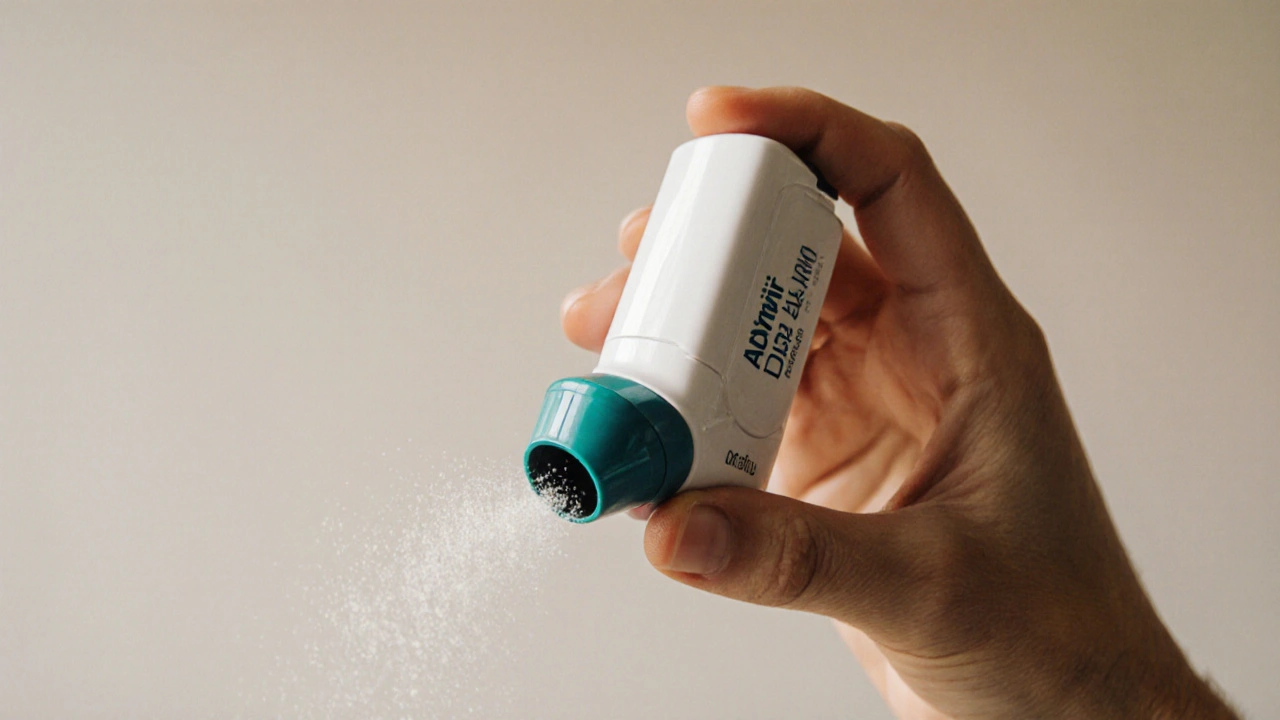When working with Salmeterol, a long‑acting β2‑adrenergic agonist inhaled medication. Also known as Serevent, it is prescribed for asthma and chronic obstructive pulmonary disease (COPD), both of which involve narrowed airways. As a beta‑agonist, salmeterol works by relaxing smooth muscle in the lungs, keeping the airways open for up to 12 hours.
The core attribute of salmeterol is its extended duration of action. Unlike short‑acting bronchodilators that act in minutes, salmeterol binds to β2 receptors in a way that slowly releases, providing steady relief. This makes it a cornerstone of maintenance therapy rather than a rescue inhaler. Patients with moderate to severe asthma or stable COPD use it to reduce night‑time symptoms and improve exercise tolerance. The drug’s efficacy ties directly to proper inhaler technique – a mist‑generating device that deposits fine particles deep into the lungs.
Because salmeterol does not treat sudden breathlessness, clinicians always pair it with a quick‑acting reliever like albuterol. This combination meets guideline recommendations that separate long‑term control from immediate relief. When the two are prescribed together, the patient gets a smooth baseline control plus a fast‑acting backup.
Dosage is straightforward: most adults take one inhalation (50 µg) twice daily, roughly 12 hours apart. Children over 4 years may use a lower dose, but the medication is not recommended for infants. The inhaler’s dose counter helps avoid missed or extra puffs, and regular check‑ups ensure the device still delivers the correct amount.
Safety is another key attribute. Common side effects include throat irritation, hoarseness, and occasional tremor. These tend to be mild and often improve with a spacer device. Rare but serious concerns—like paradoxical bronchospasm—require immediate medical attention. Patients with cardiovascular disease should discuss risks, as β2 stimulation can affect heart rate.
Beyond the drug itself, the delivery system matters. Salmeterol is available in metered‑dose inhalers (MDIs) and dry‑powder inhalers (DPIs). MDIs need coordinated inhalation, while DPIs rely on the patient’s own breath to disperse the powder. People with limited hand‑lung coordination often benefit from a DPI, whereas those with very low inspiratory flow may prefer an MDI with a spacer.
Clinicians also look at drug interactions. Salmeterol can amplify the effects of other β‑agonists, leading to increased heart rate or tremor. Non‑selective β‑blockers can blunt its bronchodilating action, so doctors usually avoid prescribing them together. Understanding these connections helps tailor therapy to each individual.
When you scroll through the articles below, you’ll see practical comparisons—like how salmeterol stacks up against other long‑acting bronchodilators, when to switch to a combination inhaler, and tips for managing side effects. Whether you’re a patient trying to fine‑tune your inhaler routine or a caregiver looking for clear guidance, the collection gives you actionable insights you can use right away.
Ready to dive deeper? The posts that follow break down dosing strategies, explain device selection, and compare salmeterol with alternatives such as formoterol and indacaterol. You’ll also find real‑world tips on adherence, cost‑saving options, and the latest research on long‑term outcomes. Let’s get started.

Compare Advair Diskus with top alternatives, covering effectiveness, side effects, cost, and how to choose the right inhaler for asthma or COPD.